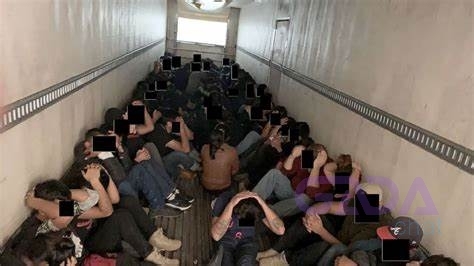TODAY TOPIC: HUMAN TRAFFICKING
CLICK ON THE LINK WATCH
FOLLOW AND LIKE
STOP GENDER BASED VIOLINCE
https://www.facebook.com/glorious.hanson.3/videos/1016114660503514/?app=fbl
Human trafficking is a form of modern-day slavery where individuals are exploited and forced into labor, sex work, or other forms of servitude. It involves:
Key Elements:
1. Recruitment: Traffickers lure victims through deception, coercion, or force.
2. Transportation: Victims are moved to new locations, often across borders.
3. Exploitation: Victims are subjected to forced labor, sex work, or other forms of exploitation.
Types of Human Trafficking:
1. Sex Trafficking: Forced prostitution, sex work, or exploitation.
2. Labor Trafficking: Forced labor, domestic servitude, or exploitation in industries.
3. Child Trafficking: Recruitment, transportation, or exploitation of children.
4. Organ Trafficking: Forced removal and sale of organs.
Indicators of Human Trafficking:
1. Unusual or unexplained behavior
2. Fear, anxiety, or intimidation
3. Lack of freedom or control
4. Poor living conditions
5. Injuries or signs of abuse
Who is Affected:
1. Women and girls (disproportionately affected)
2. Children
3. Men and boys
4. Migrants and refugees
5. Vulnerable populations (e.g., those in poverty, marginalized communities)
Consequences:
1. Physical harm and abuse
2. Emotional trauma and psychological distress
3. Loss of autonomy and freedom
4. Risk of disease and health problems
5. Stigma and social isolation
CLICK ON THE LINK WATCH
FOLLOW AND LIKE
STOP GENDER BASED VIOLINCE
https://www.facebook.com/glorious.hanson.3/videos/1016114660503514/?app=fbl
Human trafficking is a form of modern-day slavery where individuals are exploited and forced into labor, sex work, or other forms of servitude. It involves:
Key Elements:
1. Recruitment: Traffickers lure victims through deception, coercion, or force.
2. Transportation: Victims are moved to new locations, often across borders.
3. Exploitation: Victims are subjected to forced labor, sex work, or other forms of exploitation.
Types of Human Trafficking:
1. Sex Trafficking: Forced prostitution, sex work, or exploitation.
2. Labor Trafficking: Forced labor, domestic servitude, or exploitation in industries.
3. Child Trafficking: Recruitment, transportation, or exploitation of children.
4. Organ Trafficking: Forced removal and sale of organs.
Indicators of Human Trafficking:
1. Unusual or unexplained behavior
2. Fear, anxiety, or intimidation
3. Lack of freedom or control
4. Poor living conditions
5. Injuries or signs of abuse
Who is Affected:
1. Women and girls (disproportionately affected)
2. Children
3. Men and boys
4. Migrants and refugees
5. Vulnerable populations (e.g., those in poverty, marginalized communities)
Consequences:
1. Physical harm and abuse
2. Emotional trauma and psychological distress
3. Loss of autonomy and freedom
4. Risk of disease and health problems
5. Stigma and social isolation
TODAY TOPIC: HUMAN TRAFFICKING
CLICK ON THE LINK WATCH
FOLLOW AND LIKE
STOP GENDER BASED VIOLINCE
https://www.facebook.com/glorious.hanson.3/videos/1016114660503514/?app=fbl
Human trafficking is a form of modern-day slavery where individuals are exploited and forced into labor, sex work, or other forms of servitude. It involves:
Key Elements:
1. Recruitment: Traffickers lure victims through deception, coercion, or force.
2. Transportation: Victims are moved to new locations, often across borders.
3. Exploitation: Victims are subjected to forced labor, sex work, or other forms of exploitation.
Types of Human Trafficking:
1. Sex Trafficking: Forced prostitution, sex work, or exploitation.
2. Labor Trafficking: Forced labor, domestic servitude, or exploitation in industries.
3. Child Trafficking: Recruitment, transportation, or exploitation of children.
4. Organ Trafficking: Forced removal and sale of organs.
Indicators of Human Trafficking:
1. Unusual or unexplained behavior
2. Fear, anxiety, or intimidation
3. Lack of freedom or control
4. Poor living conditions
5. Injuries or signs of abuse
Who is Affected:
1. Women and girls (disproportionately affected)
2. Children
3. Men and boys
4. Migrants and refugees
5. Vulnerable populations (e.g., those in poverty, marginalized communities)
Consequences:
1. Physical harm and abuse
2. Emotional trauma and psychological distress
3. Loss of autonomy and freedom
4. Risk of disease and health problems
5. Stigma and social isolation




